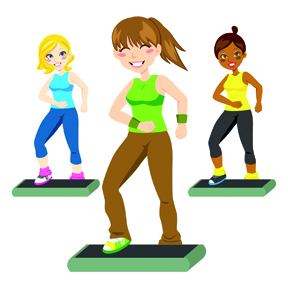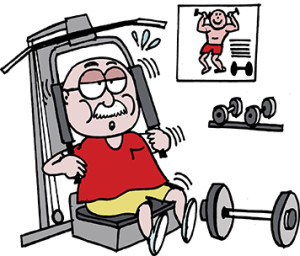Exercise & Aging Myths
Posted on June 2, 2015 by bob in Health
Myth #1: Exercise only benefits the body.
Exercise benefits hearts, muscles, bones, reduces the risk of health problems such as diabetes, kidney disease and arthritis, and also benefits the brain. Exercise strengthens connections in the brain and lessens the damaging effects of stress and depression.
Myth #2: Age determines optimum fitness routine.
The appropriate type and intensity of exercise varies from individual to individual. No matter what the intensity level of your workout, it should include aerobic, strengthening and flexibility components, and exercises that improve balance.
Myth #3: Running is better than walking.
For weight loss, running has been found to be more effective than walking, but moderately paced walking is just as effective in reducing blood pressure, cholesterol levels and the risk for diabetes and heart disease. Whether you walk or run, you gain similar health benefits if you cover the same distance.
Myth #4: Exercise must be scheduled and structured.
Your daily exercise goals don’t have to be achieved in a single time period or strict routine. Small amounts of activity—even one- and two-minute increments that add up to 30 minutes per day—can be beneficial.
Myth #5: Baby Boomers are the most physically fit generation ever.
Baby Boomers – those born between 1946 and 1964 – have a reputation as being fitness-conscious. But recent evidence suggests Boomers have a higher rate of poor health and disabilities than did their parents’ generation. Only 18 percent of Boomers get the recommended daily amount of exercise.
Our bodies did not evolve to spend hours in a chair or on a couch, yet today’s culture, more than ever, finds many of us at a desk for eight hours or more, sitting down all day, e-mailing our office mates rather than walking down the hall. Despite their image of active senior living, Boomers shouldn’t rest on their laurels—or their recliners. Follow a regular exercise program and be sure to engage in regular small amounts of activity throughout the day.
Resources: National Institute on Aging (NIA) — www.nia.nih.gov/health/publication.
American Academy of Orthopaedic Surgeons — http://orthoinfo.aaos.org/









